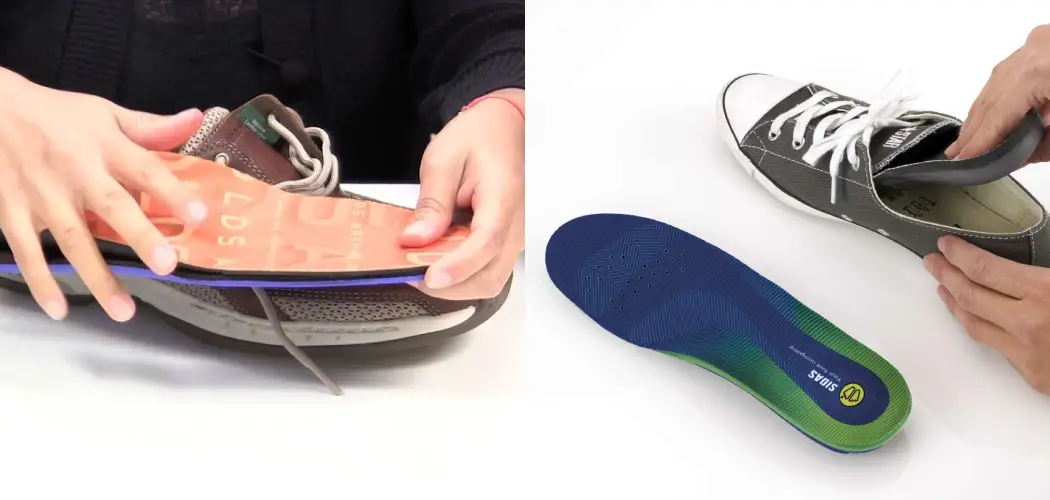Suppose you have ever had to remove glued-in insoles from a shoe. It can be a real pain, but it can be done relatively easily with the proper techniques. In this article, we’ll show you how to remove glued insoles. So whether your glued insoles are giving you blisters or just making your shoes too tight, follow along and get them out in no time!
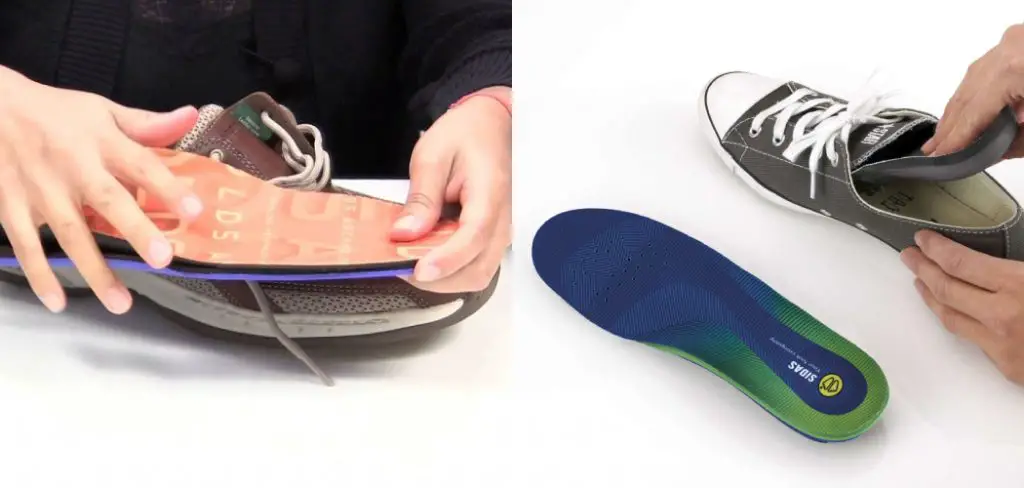
Glued insoles are usually made of foam or other materials that provide cushioning and support for your feet. They can be glued in with different adhesives, but the most common type is super glue. Super glue is very strong and can be difficult to remove, but it is possible with the right tools and techniques. Many people think that the only way to remove glued insoles is to cut them out, but this is not the case. With patience and the right tools, you can remove glued insoles without damaging your shoes.
What Is the Use of Shoe Insole?
Shoe insoles (also called footbeds) are removable inserts inside your shoes. They’re usually made of foam or gel, and they help support your feet and improve the fit, feel, and overall comfort of your shoes.
There are different types of shoe insoles on the market. Some are designed for specific purposes, such as providing extra cushioning or arch support, while others are more general.
In most cases, you can buy insoles that match the size and shape of your feet and then insert them into your shoes. However, some shoes come with glued-in insoles that cannot be removed without damaging the shoe. If you need to remove these glued-in insoles, you can do a few things.
Why Remove Glued Insoles?
There are several reasons why you might want to remove glued-in insoles from your shoes. Some of the most common include:
Uncomfortable Fit:
If the insoles are too thick or too thin, it can cause discomfort and pain in your feet.
Wear and Tear:
Over time, glued-in insoles can become worn out and lose their cushioning abilities. Removing them allows you to replace them with new ones.
Personal Preference:
Some people simply prefer to have removable insoles so they can customize the fit and feel of their shoes. Removing the glued-in insoles allows them to do so.
A Detailed Guide on How to Remove Glued Insoles
The first step is to determine the type of adhesive that was used to glue in the insoles. It will be easier to find a product that can dissolve or break down the bond if you know what kind of adhesive was used.
If you’re not sure what kind of adhesive was used, try to identify it by its appearance. For example, superglue is usually clear or white, while other bonds may be yellowish or brown. Once you’ve determined the adhesive, you can move on.
Now find a solvent that will dissolve or break down the bond between the insole and the shoe. For super glue, you can use acetone, a common ingredient in nail polish remover.
If you’re not sure what type of adhesive was used, try contacting the insoles manufacturer or the shoe to find out. They may have a specific solvent that they recommend for their products.
Method 1: Use Hairdryer to Remove the Glued Insoles
What You’ll Need:
– Hairdryer
– Scissors
– Soft brush
– Petroleum Jelly
Step 1: Cut the Insole
Use a sharp pair of scissors to cut the insole along the glued edge. Try to make a clean cut to don’t damage the insole.
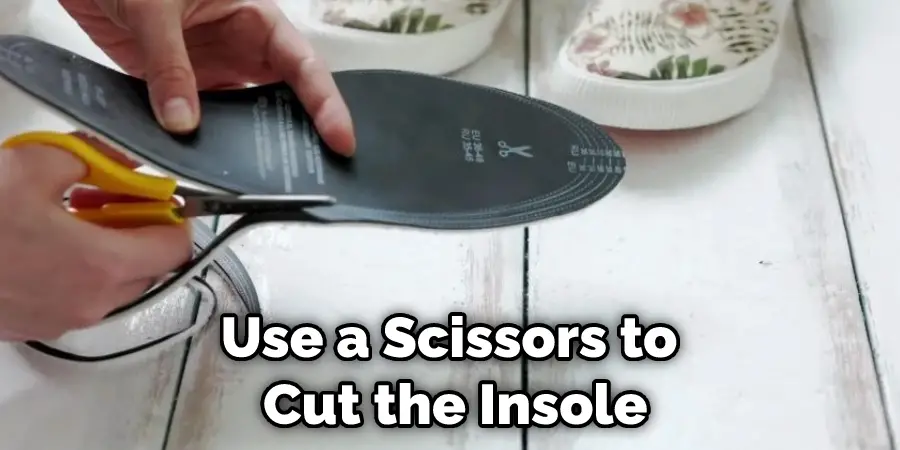
Step 2: Heat Up the Glue
Use a hairdryer to heat the glue. Hold the hair dryer about 6 inches (15 cm) away from the insole and move it around until the glue is melted.
Step 3: Remove the Insole
Once the glue is melted, carefully peel off the insole. If any residue is left behind, use a soft brush to remove it. You can also apply some petroleum jelly to dissolve any remaining glue.
Step 4: Repeat as Needed
If necessary, repeat the steps above to remove the other insole.
Method 2: Put the Shoe in an Oven
If your shoes have insoles glued in place, you can use heat to loosen the glue and remove the insoles. This method is best for removing thin, flexible insoles.
What You’ll Need:
– A pair of oven gloves
– An oven
– A pair of scissors
Step 1: Pre Heat the Oven
Set the oven to low heat, around 200 degrees Fahrenheit. Allow the oven to preheat while you prepare the shoes.
Step 2: Place the Shoes in the Oven
Once the oven is preheated, put on a pair of oven gloves and carefully place the shoes on the baking sheet. Ensure that the boots do not touch each other or anything else in the oven.
Step 3: Check on the Shoes
After about 10 minutes, check on the shoes to see if the glue has loosened. If it has, use a pair of scissors to remove the shoes’ insoles carefully. If the glue is still holding strong, leave the shoes in for a few more minutes before checking again.
Step 4: Let the Shoes Cool
Once the insoles have been removed, allow the shoes to cool before wearing them. This will help to ensure that the glue does not re-attach itself to the shoes.
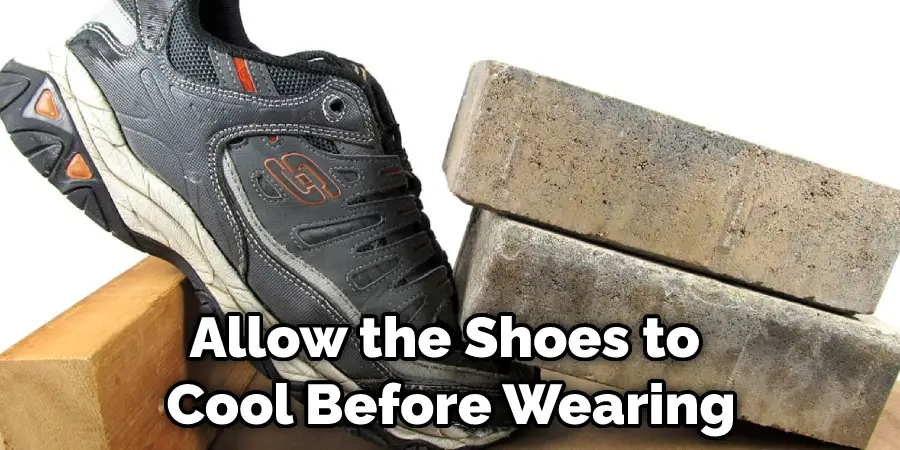
Method 3: Use Solvents to Dissolve the Glue
If the heat doesn’t seem like it will do the trick, you can try using solvents to dissolve the glue. This method is best for removing thick, rigid insoles.
What You’ll Need:
– A pair of gloves
– Acetone or nail polish remover
– A toothbrush
Step 1: Put on Gloves
To protect your hands from the solvent, be sure to put on gloves before starting.
Step 2: Apply Solvent to the Glue
Apply the acetone or nail polish remover to the glue with a toothbrush. Be sure to get all of the glue wet.
Step 3: Let it Soak
Leave the solvent on the glue for a few minutes so that it can start to dissolve.
Step 4: Remove the Insoles
Once the glue has loosened up, you should be able to remove the insole relatively easily. If there is still some glue left on the shoe, you can use a toothbrush to scrub it off.
Method 4: Use Boiling Water
If you have a pair of shoes with glued insoles that you need to remove, one method you can use is boiling water. This will loosen the glue and make it easier to peel off the insole. This is a crucial step in how to remove glued insoles.
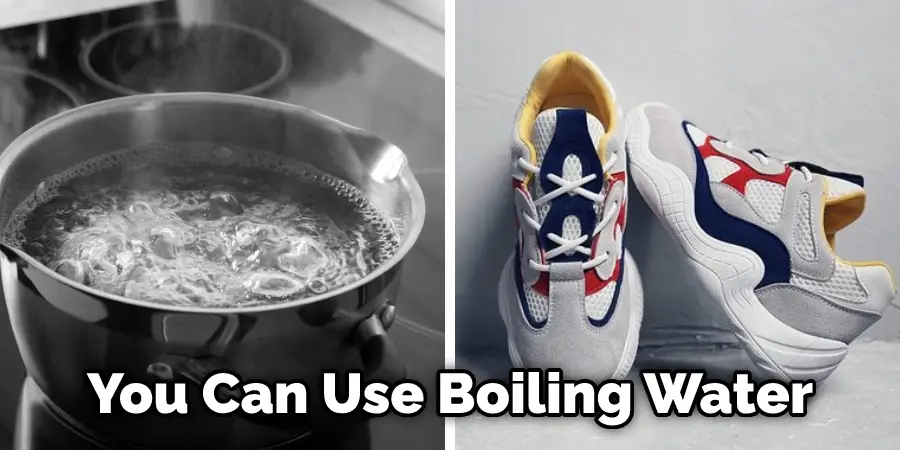
What You’ll Need:
– A pot of boiling water
– A bowl or container big enough to fit the pot
– The shoes with glued insoles
– A butter knife or other sharp object
Step 1:
Fill the pot with enough boiling water to cover the shoes.
Step 2:
Place the bowl or container inside the pot, making sure it’s big enough to fit the pot.
Step 3:
Put the shoes in the bowl or container.
Step 4:
Let the shoes soak for 10-15 minutes.
Step 5:
Use a butter knife or other sharp object to pry up the glued insole. It should come off relatively quickly.
If you have any trouble removing the insole, try soaking it for a little longer.
Method 5: Call a Professional
If you have tried all of the abovementioned methods and are still struggling to remove your glued insole, it may be time to call a professional. This is the most expensive option, but it is also the most likely to succeed. A professional will have the tools and experience necessary to remove your insole without causing any damage safely.
If you decide to go this route, research local shoe repair shops before you choose one. Not all repair shops offer this service, so you may need to call around. Ask the shop owner how much they charge for insole removal, as prices vary significantly.
In general, expect to pay anywhere from $10 to $50 for this service. However, keep in mind that the cost may be higher if your insole is securely glued in place.
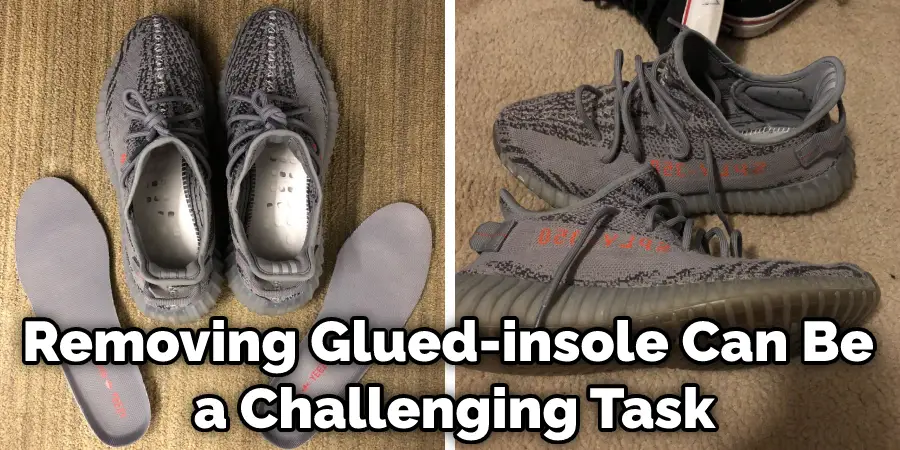
Removing a glued-insole can be a challenging task, but it is doable with the right tools and techniques. By following the methods mentioned in this article, you should be able to get the job done without too much trouble. Good luck!
Tips and Warnings:
Tips:
– If you are having trouble removing the insoles, you can try using a hairdryer to heat the glue. This will help to loosen the adhesive.
– You can also use a putty knife or other sharp tool to scrape off the glued insoles. Be careful not to damage the surface of your shoes when doing this.
– If you are still having trouble removing the glued insoles, you may need to use a solvent such as acetone or nail polish remover. Apply a small amount of the solvent to a cloth and rub it onto the glued area. Let it sit for a few minutes before trying to remove the insoles again. Repeat this process if necessary.
Warnings:
– Be careful not to damage the surface of your shoes when removing the glued insoles.
– Do not use a sharp object such as a knife to scrape off the adhesive. This could damage your shoes.
– Do not use a solvent such as acetone or nail polish remover if you are unsure how to do so safely. These solvents can be harmful if ingested or inhaled.
What Are the Benefits of Removing Glued Insoles?
There are a few benefits of removing glued insoles. First, it can help improve the comfort of your shoes. If your insoles are causing discomfort, removing them may help make your shoes more comfortable to wear.
Additionally, removing glued insoles can also help improve the fit of your shoes. If the insole is too big or too small, removing it and replacing it with an insole that fits better can help make your shoes more comfortable and snug.
Lastly, if you have problems with your feet or ankles, removing the insole may provide relief. For example, if you have Plantar Fasciitis, removing the insole may decrease the tension on the fascia. Likewise, if you are experiencing ankle pain, removing the insole may help to reduce the stress on your ankles.
You Can Check It Out to Style Red Vans
Is It OK to Wear Shoes Without Insoles?
Most people think it’s okay to wear shoes without insoles, but this is not always the case. Depending on the condition of your shoes and the type of insole you’re using, going without insoles may be more harmful than helpful.
If your shoes are relatively new or in good condition, it’s probably okay to go without insoles. However, if your shoes are old or in poor condition, it’s best to use a good-quality insole to protect them from further damage. Additionally, if you’re not using the correct type of insole for your needs, you might be better off going without them altogether.
There are many different types of insoles available on the market today, so it’s essential to choose the right style for your needs. Consult a professional foot care specialist if you’re not sure which type of insole is best for you. They can help you find the correct insole and show you how to use them correctly.
Remember, it’s always better to be safe than sorry. So, if you’re not sure whether or not it’s okay to wear shoes without insoles, it’s best to play it safe and use them anyway.
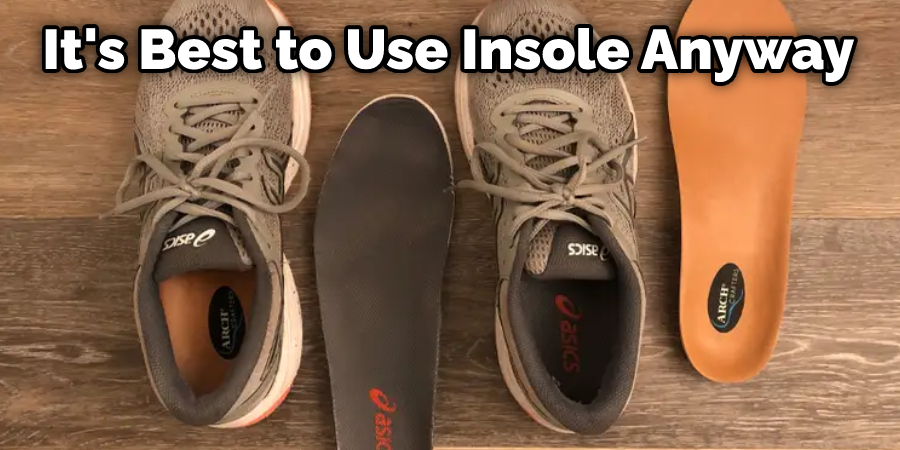
You Can Check It Out to Remove Shoe Polish From Carpet
Frequently Asked Questions:
Q: How Do You Remove Insoles From Shoes Without Damaging Them?
A: To remove insoles from shoes without damaging them, you can use a hairdryer to heat the glue and gently peel off the insole. You can also try using a putty knife or other sharp tool to scrap off the insole, being careful not to damage the surface of the shoe. Additionally, you can use a solvent like acetone or nail polish remover to dissolve the glue and remove the insole. The key is to be gentle and take your time to avoid damaging the shoes. You can also consider taking your shoes to a professional for insole removal if you are unsure about doing it yourself.
Q: Can Glued Insoles Be Reused?
A: It is not recommended to reuse glued insoles as the adhesive may have lost its strength and will not provide proper support for your feet. It’s best to replace old insoles with new ones for optimal comfort and support. However, if you must reuse the insoles, make sure to clean off any remaining adhesive and reapply a new layer of glue before placing them back into your shoes. It’s also essential to properly dry the insoles before reapplying them, as moisture can compromise the adhesive’s strength.
Q: Can Glued Insoles Be Removed Without Any Special Tools?
A: While it is possible to remove glued insoles without special tools, it may be more challenging and potentially cause damage to the shoe. Using a hairdryer or solvent can make the removal process easier and less damaging to your shoes. It is generally recommended to seek professional help if you are having trouble removing glued insoles without tools. You can also consider investing in a putty knife or similar tool specifically designed for removing insoles. Overall, using tools can help minimize any potential damage to your shoes during the removal process.
Q: Can I Use Super Glue to Reattach Glued Insoles?
A: It is possible to use super glue to reattach glued insoles, but it may not be the best option. Super glue can be too harsh on your skin and may cause irritation or burns. If you must use super glue, it’s best to apply a small amount and avoid contact with your skin. Additionally, make sure the insole is properly aligned before pressing it into place to avoid any discomfort while wearing the shoes. It’s always best to use a specific shoe adhesive to reattach insoles.
This will ensure proper bonding and prevent any potential skin irritation. It is always best to follow the manufacturer’s instructions for application and safety precautions when using any type of adhesive. If you are unsure or uncomfortable with using super glue, it’s best to seek professional help or use a designated shoe adhesive instead.
You Can Check It Out to Remove Doc Martens Insoles
Conclusion
So there you have it. Now that you know how to remove glued insoles, your shoes will be as good as new! Be sure to share this post with any of your friends who might need help removing glued-in soles, and don’t forget to leave a comment below if you have any questions or tips of your own. Thanks for reading!
You May Also Read: How to Make Shoes in the Wilderness

